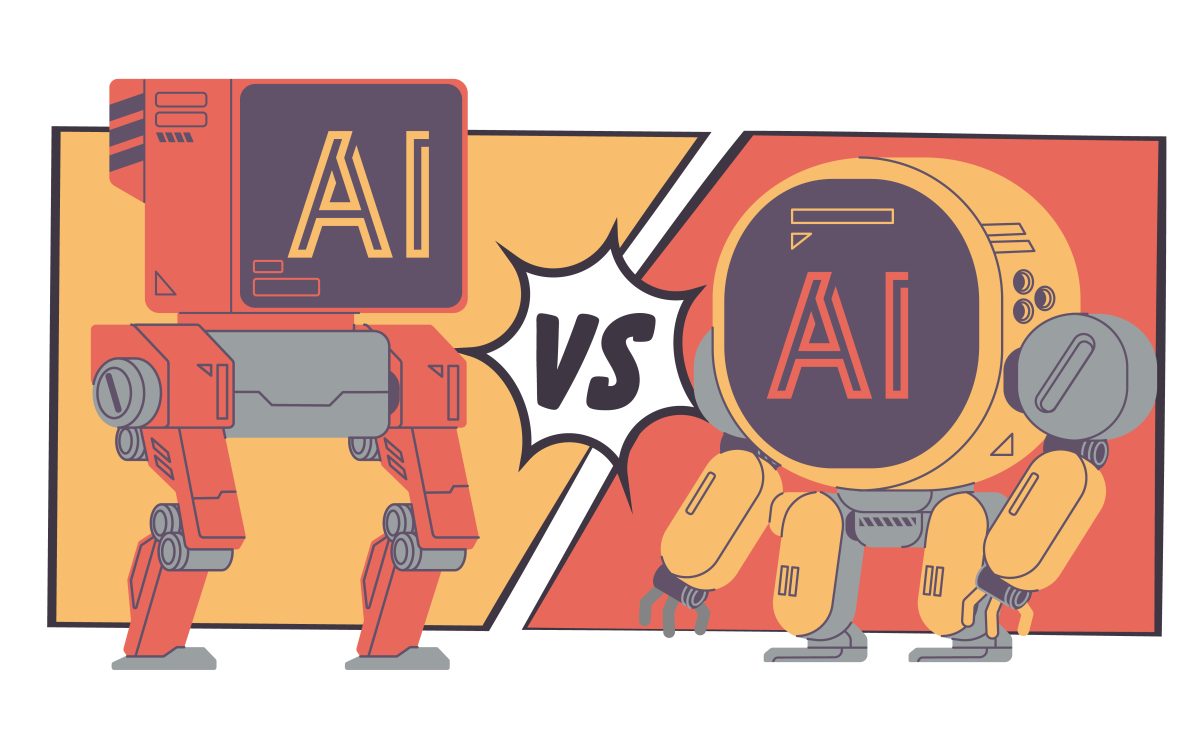In today’s rapidly evolving technological landscape, organizations are increasingly exploring advanced solutions to optimize their operations. One of the hottest topics in the field is Traditional AI vs Generative AI. This blog examines the key differences between these two approaches, delving into their strengths, limitations, applications, and prospects.
As businesses seek to innovate and stay ahead, understanding Traditional AI and Generative AI is essential for making informed technology investments. Throughout this article, we will highlight the critical aspects of Traditional AI vs Generative AI and explain why this comparison is more relevant now than ever before.
By – Vamsi Bumireddy
What is Traditional AI and Generative AI?
At its core, Traditional AI vs Generative AI represents two distinct paradigms in artificial intelligence. Traditional AI typically relies on rule-based systems and predefined models that perform specific tasks such as data classification, predictive analytics, or process automation. In contrast, Generative AI leverages deep learning techniques—especially neural networks like GANs (Generative Adversarial Networks) and transformers—to create new, original content.
When comparing Traditional AI vs Generative AI, it becomes evident that while Traditional AI excels in accuracy and reliability for well-defined tasks, Generative AI opens creative possibilities by generating novel outputs, from text and images to code and designs.
Strengths and Limitations of Traditional AI and Generative AI
Strengths of Traditional AI
1. Proven Accuracy: Traditional AI systems have a long history of providing reliable outputs in controlled environments.
2. Efficiency in Task Automation: These systems excel in automating repetitive and structured tasks with high precision.
3. Clear Decision Boundaries: Traditional AI operates on defined rules, making its decision-making process transparent and predictable.
Limitations of Traditional AI
1. Lack of Creativity: Traditional AI cannot produce novel outputs, which limits its application in creative domains.
2. Rigid Frameworks: Being rule-based, Traditional AI systems often struggle to adapt to scenarios that fall outside predefined parameters.
3. Limited Adaptability: These systems may require extensive reprogramming to accommodate new types of data or changes in business processes.
Strengths of Generative AI
1. Innovative Content Creation: Generative AI is capable of producing original and creative content, opening new avenues in design, marketing, and beyond.
2. Adaptability: With its ability to learn from large datasets, Generative AI can adapt to various contexts and generate relevant outputs.
3. Enhanced User Engagement: By delivering dynamic and personalized content, Generative AI helps boost customer engagement and satisfaction.
Limitations of Generative AI
1. Unpredictability: The outputs of Generative AI can sometimes be less consistent or reliable than those from Traditional AI systems.
2. Resource Intensity: Training and deploying generative models often require significant computational resources and expertise.
3. Ethical Considerations: The creative freedom of Generative AI can lead to challenges such as content misuse or issues related to intellectual property.
Applications of Traditional AI and Generative AI
Both approaches have wide-ranging applications across industries. Here are ten examples where Traditional AI and Generative AI are making an impact:
1. Predictive Analytics: Traditional AI models excel at forecasting trends based on historical data, whereas Generative AI can simulate scenarios for better strategic planning.
2. Customer Service: Conversational agents built on Traditional AI provide reliable, rule-based support, while Generative AI powers chatbots are capable of more creative, context-aware responses.
3. Content Creation: Generative AI is revolutionizing digital marketing by producing original content such as articles, social media posts, and advertisements, a task where Traditional AI is less effective.
4. Image and Video Synthesis: Generative AI creates realistic images and videos for media and entertainment, unlike Traditional AI, which primarily processes and categorizes existing visual data.
5. Data Classification: Traditional AI is highly effective in classifying large datasets accurately, an essential task in sectors like finance and healthcare.
6. Fraud Detection: Both Traditional AI and Generative AI contribute to cybersecurity, with Traditional AI detecting known fraud patterns and Generative AI identifying novel anomalies.
7. Personalization Engines: Generative AI enables the creation of personalized recommendations and user experiences, enhancing engagement in e-commerce and digital services.
8. Process Automation: Traditional AI automates routine processes such as document handling and workflow management, leading to increased operational efficiency.
9. Research and Development: In scientific research, Generative AI can simulate complex scenarios, aiding in hypothesis testing and innovation.
10. Creative Design: Generative AI offers tools for designers to generate new visual concepts and prototypes, complementing the structured analysis provided by Traditional AI.
Why AI in Business is Crucial Now
As we examine Traditional AI vs Generative AI, the importance of AI in business has never been greater. In today’s fast-paced market, the ability to automate processes, generate innovative content, and make data-driven decisions is key to maintaining a competitive edge. Companies that integrate Traditional AI or Generative AI into their operations benefit from improved efficiency, cost savings, and enhanced customer experiences. Additionally, as digital transformation accelerates, these AI technologies help businesses scale operations and respond to market shifts with agility. Embracing Traditional AI vs Generative AI is not just a technological upgrade—it is a strategic imperative for any forward-thinking organization.
Risks of Not Adopting AI Technologies
Companies that fail to integrate Traditional AI or Generative AI into their operations may face significant challenges. Without these advanced tools, organizations struggle with inefficient processes, increased operational costs, and slower response times to market changes. The lack of AI-driven insights can lead to missed opportunities, leaving businesses vulnerable to competitors who leverage these technologies for innovation and improved customer engagement. Moreover, the absence of automated systems increases the risk of human error and data breaches, further compromising business operations. In a landscape where speed and accuracy are paramount, not adopting Traditional AI or Generative AI can significantly hinder an organization’s growth and adaptability.
Stratpilot: Empowering Your AI Strategy
Stratpilot is an AI-powered assistant that enhances your approach by providing intelligent support tailored to your business needs, Stratpilot helps integrate AI solutions into daily operations with ease. It offers a user-friendly interface and practical guidance that empower teams to harness AI effectively, ensuring that businesses benefit from faster decision-making and improved operational efficiency. Stratpilot offers actionable recommendations and streamlined processes that maximize the potential of Traditional AI and Generative AI in your organization.
Transform your business with cutting-edge AI technologies. Embrace the power of Traditional AI and Generative AI and elevate your operational efficiency, innovation, and customer engagement. Sign up for Stratpilot today to experience how our AI-powered assistant can optimize your strategy and drive sustainable growth.
Frequently Asked Questions (FAQs)
Q1: How does AI improve cybersecurity and business processes?
A: AI automates data analysis and threat detection, enabling faster, more accurate responses to security breaches and streamlining business operations for better efficiency.
Q2: Can small businesses benefit from AI in Business Process Management?
A: Yes, small businesses can leverage both Traditional AI and Generative AI to automate tasks, gain insights, and improve customer engagement without significant upfront investment.
Q3: What industries are most impacted by Traditional AI and Generative AI?
A: Industries such as finance, healthcare, marketing, and creative design are heavily impacted by the differences between Traditional AI and Generative AI, each using these technologies to address unique challenges.
Q4: How does Stratpilot assist in implementing AI strategies?
A: Stratpilot provides a user-friendly interface and practical guidance to help businesses integrate AI solutions effectively, ensuring that organizations maximize the benefits of both Traditional AI and Generative AI in their operations.





